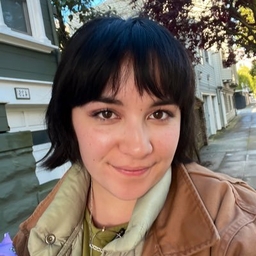
Liz Lindqwister
Science Communications Specialist at California Academy of Sciences
vest connoisseur & science writer @calacademy @biographic 🐟🐡🐠 | prev @sfstandard @stanforddaily @librarycongress | views = my own | she/they
Articles
-
2 months ago |
nautil.us | Liz Lindqwister
At first glance, these little star-shaped plants look anything but intimidating. They sprout butter-yellow flowers and downy fuzz and, measuring just a few centimeters across, they are so discreet that they belong to a class of plants botanists affectionately call “belly plants”—those that are best observed while lying on the ground.
-
Mar 5, 2025 |
nautil.us | Liz Lindqwister
The leafy seadragon lives up to its name: Its long sinuous back and tail are graced by a mane of frilly fins that resemble the leafy seagrass meadows where it likes to hang out. Spotted in the cooler reefs off the coast of Raid Bay, South Australia, this baby seadragon floated past a lurking school of rough bullseye fish—and into the frame of Jenny Stock, a British underwater photographer, whose image was a Close Up Photographer of the Year prizewinner.
-
Feb 18, 2025 |
nautil.us | Liz Lindqwister
In what looks like a still from a film noir, two male stag beetles clash against a shadowy dropback, deep in the oak forests of Russia’s Voronezh region. Their pitched battle for dominance, and for the chance to win over a nearby mate, unfolds during the brief summer period when these insects emerge from the undergrowth to reproduce. Photographer Svetlana Ivanenko says she traveled over 400 miles to capture this intimate scene.
-
Feb 13, 2025 |
nautil.us | Liz Lindqwister
An elusive Andean bear emerges from the shadowy undergrowth of Colombia’s highland rainforests. Eyes narrowed with intense focus and an inky black paw outstretched, the massive ursid—nicknamed Nariz de Calavera (Skull Nose)—appears ready to pounce on the photographer. Nautilus Members enjoy an ad-free experience. Log in or Join now .
-
Nov 26, 2024 |
nautil.us | Liz Lindqwister
A small, scaled creature appears ready to emerge through a broken wall in an iridescent dome. Though the dome might resemble a strange spaceship, it is actually the remains of a moth egg, and the creature inside is a wasp that parasitized the egg. Nautilus Members enjoy an ad-free experience. Log in or Join now . Many wasp species are parasites, laying their offspring in or feeding on other insect and spider eggs.
Try JournoFinder For Free
Search and contact over 1M+ journalist profiles, browse 100M+ articles, and unlock powerful PR tools.
Start Your 7-Day Free Trial →X (formerly Twitter)
- Followers
- 1K
- Tweets
- 1K
- DMs Open
- No